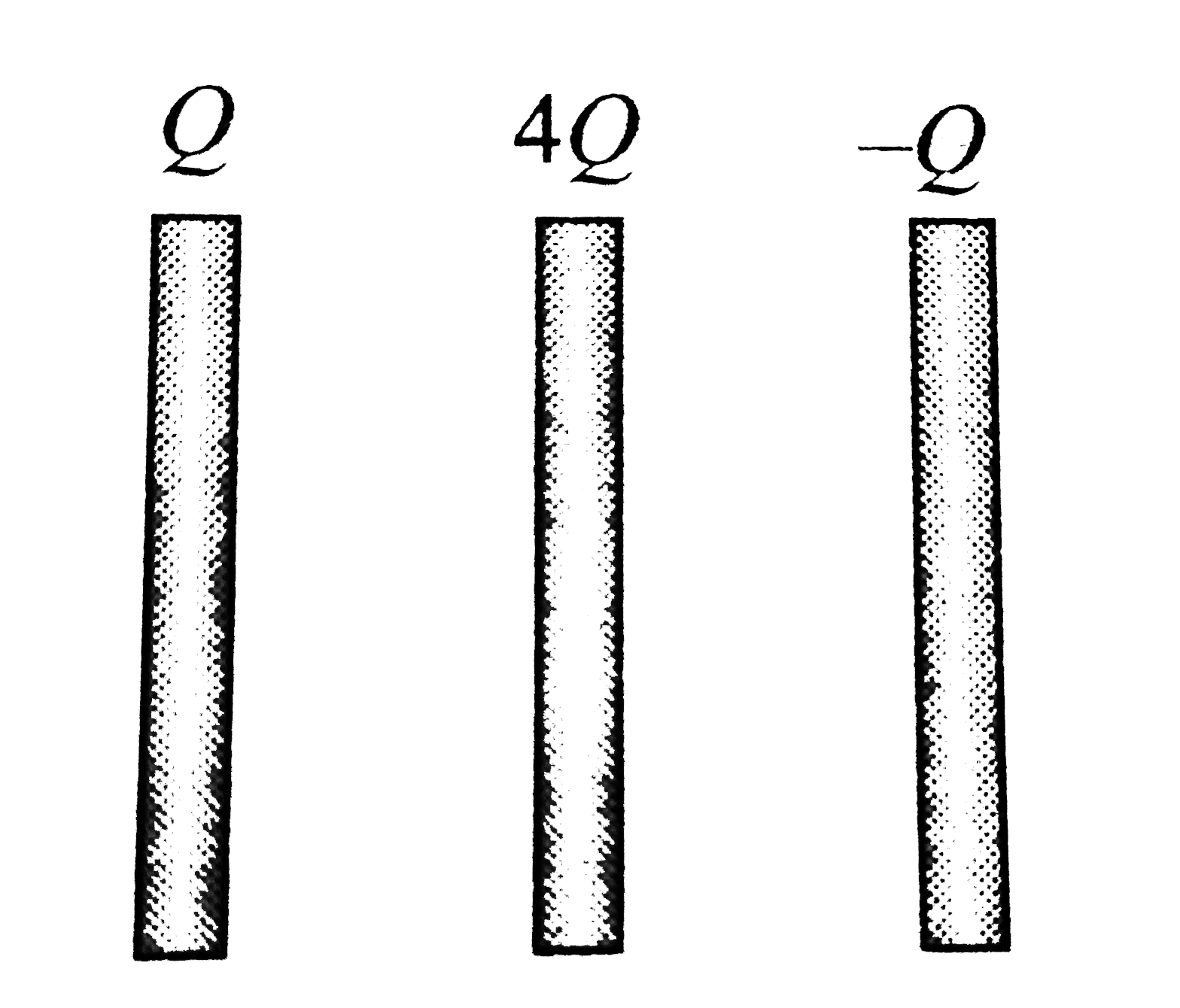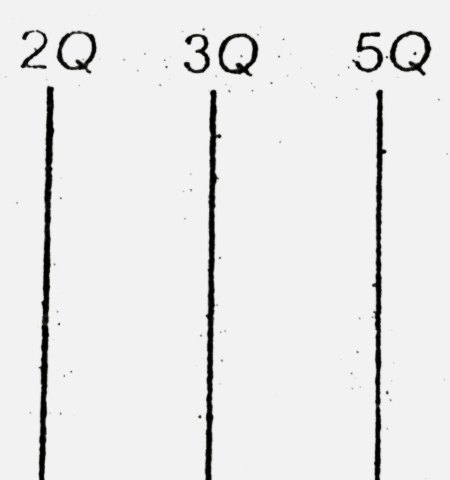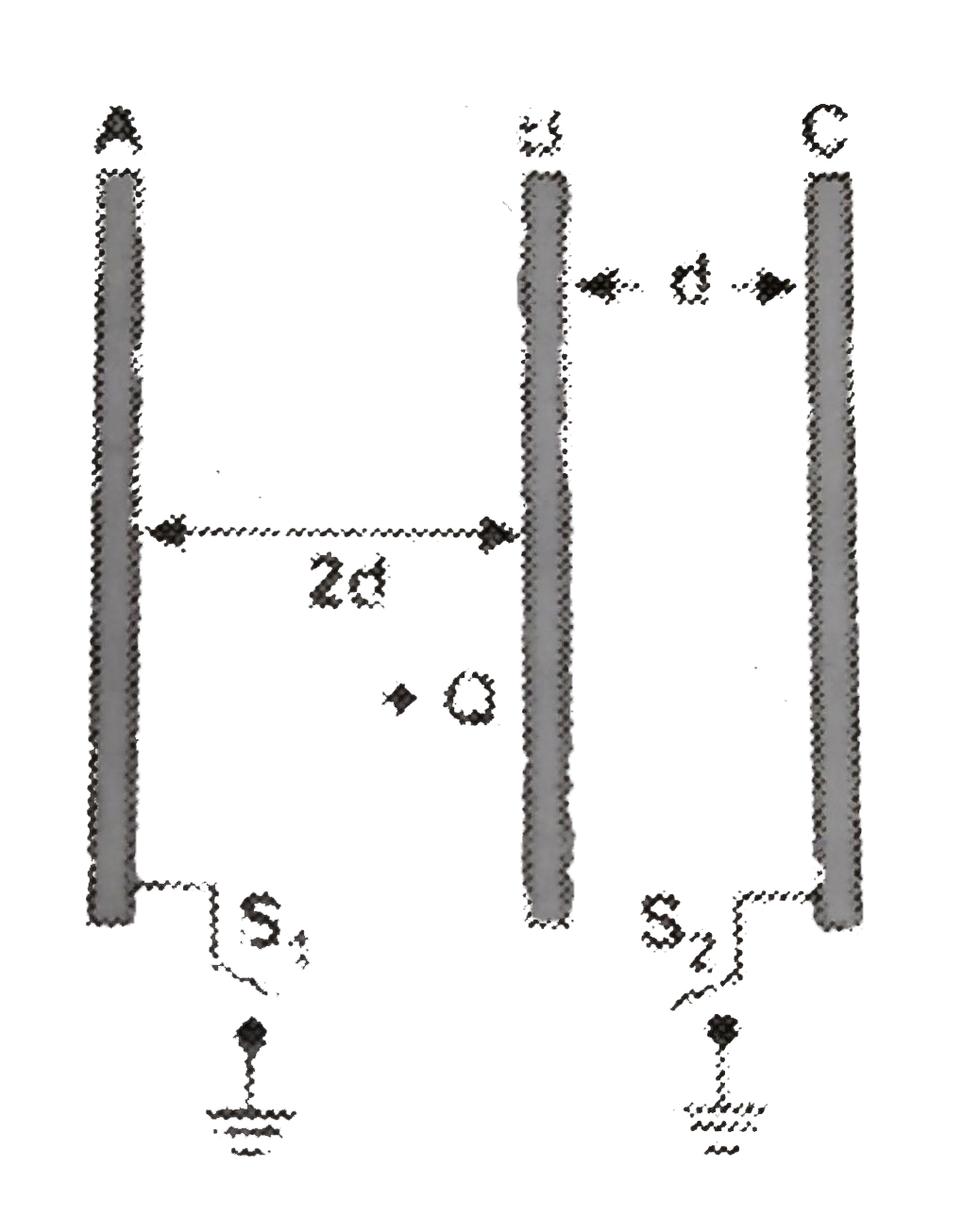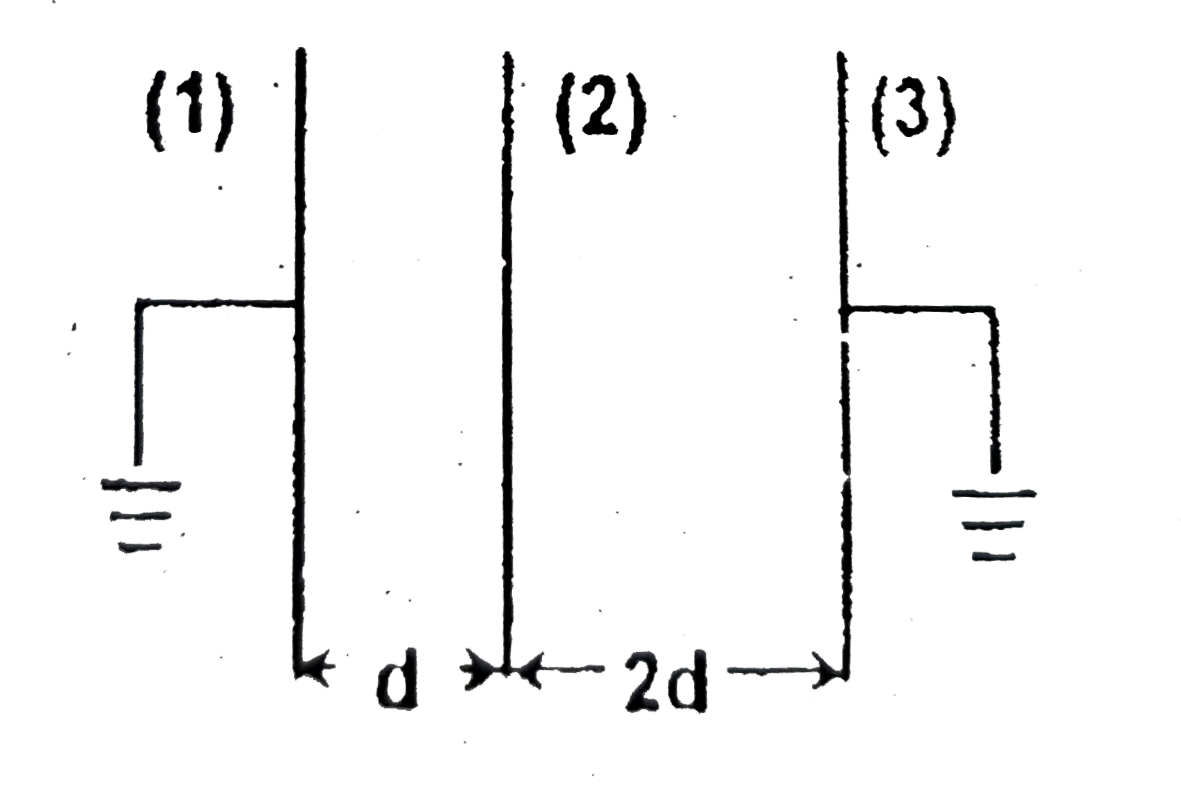Three large identical conducting plates of area A are closely placed parallel to each other as shown (the area A is perpendicular to plane of diagram). The net charge on left, middle and right plates are QL,QM and QR respectively. Three infinitely large parallel surface SL,SM and SR are drawn passing through middle of each plate such that surface are perpendicular to plane of diagram as shown. Then pick up the correct option(s).

Option1 The net charge on left side of surface SL is equal to net charge on right side of surface SR
Option2 The net charge on left side of surface SL is equal to net charge on right side of surface SM
Option3 The net charge on left side of surface SL is equal to net charge on right side of surface SL
Option4 The net charge on right side of surface SL is equal to net charge on left side of surface SR
Since electric field on plate at surface SL is zero, net charge on left side of SL is equal to net charhge on right side of SL . Further net charge between any two dotted surfaces (out of SL,SM and SR) is zero from Gauss theorem.
∴ Charge on left most surface q1 is equal to charge on rigth most surface q6, that is, q1=q6 hence all statements are true. 
Topper's Solved these Questions
Similar Questions
Two conducting plates A and B are placed parallel to each other. A is given a charge. Q1 and B a charge Q2. Find the distribution of charges on the four surface.
View SolutionFigure shows three metallic plates with charges Q, 4Q, and -Q, respectively. Determine the final charges on all the surfaces.

View SolutionFigure shows three large metallic plates with chrges −Q,3Q and Q respectively. Determine the final charges on all the surfaces.

View SolutionThree charged conducting plates are separated by small distances as shown in figure. The charges on the plates are shown. Find the ratio of charge on right surface and left surface of the middle plate.

View SolutionThree identical parallel conducting plates A, B and C are placed as shown. Switches S1andS2 are open, and can connect A and C to earth when closed. +Q charges is given to B.

View SolutionTwo conducting plates X and Y, each having large surface aera A (on one side), are placed parallel to each other as show in figure.

Find the surface charge density at the inner surface of the plate X.
View SolutionTwo conducting plates A and B are placed parallel to each other. A is given a charge Q1 and B a charge Q2. Prove that the charges on the inner surfaces are of equal magnitude and opposite sign.
View SolutionThree identical parallel conducting plates A, B and C are placed as shown. Switches S1andS2 are opened and connect A and C to earth when closed. +Q charge is given to B.

View SolutionThree identical plates of area A are arranged as shown. A charge +Q is given to plate (2). Then,

View SolutionTwo conducting plates M and N, each having large surface area A (on one side), are placed parallel to each other in figure. The plate M is given charge Q1 and N, charge Q2(<Q1). Then

View Solution